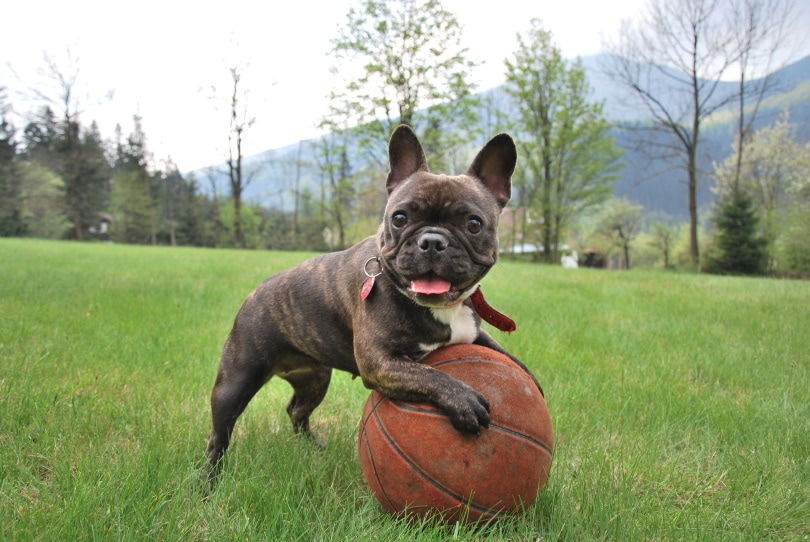Experts believe that humans have been owning pets for more than 30,000 years. Our long history with pets means tons of myths and misconceptions are circulating about owning these adorable creatures.
Unfortunately, many of these myths and misconceptions are not only wrong, but they are harmful to the pet’s health. If you are a pet owner, it’s imperative to debunk these myths to provide your pet the best care it deserves.
Below, you will find 14 common pet myths and misconceptions. Read through them all to learn which myths you have been believing.
The 14 Pet Myths and Misconceptions To Stop Believing
1. Some dogs and cats are hypoallergenic.
- True or False: False
- Reality: All dogs and cats can cause allergies.
If you have allergies, you know that there are some breeds deemed “hypoallergenic.” This term is often misunderstood and causes individuals to think that some dogs and cats are completely hypoallergenic and will not trigger any allergies.
Hypoallergenic means that the animal is less likely to irritate allergies, but allergies can still be irritated by the animal. Animals deemed hypoallergenic don’t cause allergies as much as other breeds, but they still can make you sniffle.
This is because allergies are triggered by a certain protein in the cat’s or dog’s urine, saliva, and skin. Since all cats and dogs have this protein, even the hypoallergenic ones can trigger allergies.

2. Pet hair is responsible for causing allergies.
- True or False: False
- Reality: Protein in pet saliva, urine, and skin cells triggers allergies.
As mentioned above, allergies are caused by a certain protein in pet saliva, skin, and urine. This fact debunks the myth that pet hair is responsible for allergies.
Pet hair itself is no different from the hair on our heads. Whenever pets shed their fur, pet dander and flakes come with the fur. The dander is causing the allergic reaction, not the hair itself. Licks from the pet can also trigger allergies.
3. Cats always land on their feet.
- True or False: False
- Reality: While cats have a “righting reflex”, they do not always land on their feet
Cats have a unique ability called the air-righting reflex. This reflex allows the cat to correct their body position while they are falling so that they land on their feet. To do this, cats have to fall from a certain height.
Even though cats are more talented at turning themselves in the correct position, it isn’t always possible. If a cat falls from a short distance, it might not have time to correct its position. In cases where the cat has time to correct its position, it can still injure itself, especially if falling from great heights.

4. Purring means your cat is happy.
- True or False: Sometimes true
- Reality: Purring can also mean your cat is scared or aggressive.
Purring is one of the most recognizable sounds that a cat makes. Most cat owners associate purring with a happy cat. In some cases, this is true, but it is not true in all situations.
Cats also purr whenever they are irritated, scared, or acting aggressively. Purring is simply a self-comforting mechanism. If your cat is purring while showing other signs of comfort, the cat is likely happy. Be on the lookout for signs of negative emotions, for these can tell you that the purring is negative.
5. Tail-wagging means that your dog is happy.
- True or False: Sometimes true
- Reality: Dogs sometimes wag their tails when stressed or anxious.
Like the purring misconception, most people associate tail wagging with happiness and excitement in dogs. Don’t get us wrong; many dogs wag their tails whenever they are happy and excited to see you.
Sometimes, dogs wag their tails whenever they are stressed or anxious. Tail wagging is just a result of excitement, whether positive or negative. For this reason, you will see many dogs wagging their tails before a dog fight. Look for other signs of stress to determine if your dog is wagging its tail out of stress.

6. Dogs’ mouths are cleaner than human mouths.
- True or False: False
- Reality: Dog mouths have bacteria, but they differ from those found in human mouths.
Many people believe a dog’s mouth is cleaner than a human’s. This misconception is because the bacteria in a dog’s mouth are different from a human’s. Hence, the bacteria from your dog’s mouth cannot be transferred to you.
Even so, dogs have just as much bacteria in their mouths as we do. It is just a different type of bacteria than what we have, meaning their mouths are equally dirty as our own.
7. All cats hate getting wet.
- True or False: False
- Reality: Some cats enjoy it.
It’s a common belief that cats hate getting wet. This is certainly true for some cats, but not all. Shorthair cats and cats exposed to water from a young age often enjoy splashing around in a pool or bath.
In contrast, cats with long fur or not exposed to water often hate getting wet. The water weighs them down, making it more difficult to escape a predator. Expose your kitten to water from a young age to acclimate it to the sensation.

8. Dogs are colorblind.
- True or False: False
- Reality: Dogs can’t see all the colors we can, but they can see some colors.
One of the most common myths about dogs is that they can only see in black and white. This myth is completely false. Dogs can see color but do not see color as vibrantly as we do.
More specifically, dogs can see shades of blue, yellow, and green, though the colors aren’t as bright. Their strong senses of smell and hearing make up for their dulled color vision.
9. Dogs get enough exercise when playing in the backyard.
- True or False: False
- Reality: Dogs need a lot of exercise, including mental stimulation and walks.
Dogs need a lot of exercise, and your backyard isn’t going to cut it alone. Although having a fenced-in backyard is great, your dog also needs mental stimulation, walks, and even jogs for complete exercise.
Small dogs should be able to get enough exercise from you playing inside and outside with them. Unfortunately, larger dogs will need a lot more stimulation since fences and houses are simply not big enough to get all their energy out.

10. Pets eat grass when they are sick.
- True or False: Sometimes true
- Reality: Pets eat grass for many reasons.
Pets eat grass for several reasons. Sometimes, pets eat grass because they are sick and want to console their bellies. Other times, pets eat grass to help digestion, get the nutrition they lack, or because they’re bored.
Unless your pet is showing other signs of illness, you don’t have to think much about their grass consumption.
11. A “dog year” is the same as seven human years.
- True or False: Sometimes true
- Reality: Many factors impact how quickly a dog ages.
Young children are often told that a dog year is the same as seven human years. This myth is more of an estimation than an exact science. Many other factors will impact how quickly your dog ages.
For example, breed and size heavily impact how quickly your dog experiences the effects of aging. Large breeds age faster than smaller ones as a result. On average, one dog year for a large breed is about 15 human years. The 7-year estimation may be more accurate for smaller pets.

12. Goldfish can live in a bowl.
- True or False: False
- Reality: Goldfish need a minimum of 20 gallons.
Goldfish are one of the most popular pets, and they’re often chosen because they can be stuck inside a bowl. This misconception is outright wrong and is harmful to your goldfish. A single goldfish needs a minimum of 20 gallons to swim around. If you put your goldfish in a small bowl, it will die quickly.
13. Your dog is healthy if it has a wet nose.
- True or False: Sometimes true
- Reality: Your dog’s nose will change based on activities.
Some pet owners check to see if their dog is healthy by looking at their nose. If it is wet, it means the dog is healthy. Although this trick sometimes works, there are some instances when your dog’s nose should be dry.
Many activities can impact your dog’s nose being wet or dry. When your dog is sleeping, it will likely have a dry nose, which is completely normal. Look for other signs to determine if your dog is sick or healthy.

14. Small pets don’t require as much effort as large ones.
- True or False: False
- Reality: Small pets are just as much a responsibility as dogs or cats.
Many parents surprise their young children with small pets like guinea pigs or hamsters. There is a misconception that these creatures are easier to care for, which makes them better suited for children.
Under no circumstance should children be responsible for taking care of pets, even small ones. Small pets require just as much care and attention as large dogs. Guinea pigs, for example, need to have their cages cleaned daily, fed twice a day, their nails trimmed regularly and held respectfully.
In other words, small pets require just as much effort as big pets. Don’t get small exotic pets if you aren’t prepared to provide them with the lifestyle they need and deserve.
Tips for Caring for Your Pet
If you’ve got a new pet, it’s important that you do not let false information and myths cause you to care for your pet incorrectly. Instead, always provide your pet top-notch care to ensure they live a healthy and happy life.
The best way to avoid any harmful misconceptions is to talk to your vet. Your vet will have extensive knowledge of your pets specifically. This knowledge will help you to debunk harmful myths and learn top information concerning caring for your pet.
If you ever hear or read something that you are not quite sure if it’s true, just call your vet directly. Your vet will be happy to clarify any confusion and set the record straight.
Final Thoughts
As you can see, there are tons of myths and misconceptions about pets. Some of these myths are completely harmless, but others can cause a pet to become sick and die prematurely.
Make sure that you are always providing your pet with the care it needs. If you aren’t sure what your pet needs, talk to your vet. Your vet will be able to clarify any confusion to ensure your pet is getting the proper care, love, and attention it deserves.
See also:
- 210 Dog Names Starting With N For Your Naughty Pup!
- 100+ Food Names for Dogs: Scrumptious Options for Your Pup
Featured Image Credit: Chendongshan, Shutterstock
Contents
- The 14 Pet Myths and Misconceptions To Stop Believing
- 1. Some dogs and cats are hypoallergenic.
- 2. Pet hair is responsible for causing allergies.
- 3. Cats always land on their feet.
- 4. Purring means your cat is happy.
- 5. Tail-wagging means that your dog is happy.
- 6. Dogs’ mouths are cleaner than human mouths.
- 7. All cats hate getting wet.
- 8. Dogs are colorblind.
- 9. Dogs get enough exercise when playing in the backyard.
- 10. Pets eat grass when they are sick.
- 11. A “dog year” is the same as seven human years.
- 12. Goldfish can live in a bowl.
- 13. Your dog is healthy if it has a wet nose.
- 14. Small pets don’t require as much effort as large ones.
- Tips for Caring for Your Pet
- Final Thoughts











